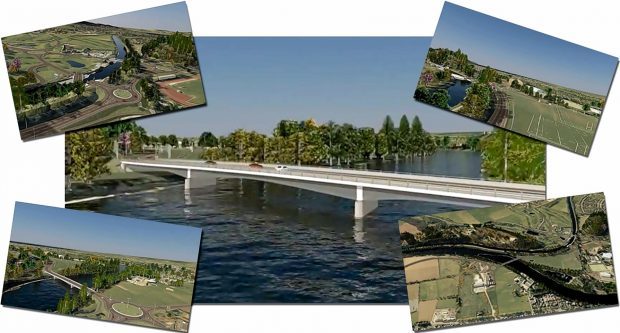A £43.5million project to complete a congestion-busting bypass around southern Inverness is accelerating.
Workers on the long-awaited West Link scheme in the Highland capital are already passing their first “milestones” just a few weeks after the first spades hit the ground.
Today, the concrete will be poured to lay the foundations for the replacement Highland Rugby Club facilities, and next week Bught Drive will re-open to two-way traffic.
Later this month, contractors will start working in the River Ness to pave the way for the new bridge.
The start of the first phase of the West Link – a 1.4-mile stretch connecting Dores Road to the A82 Glenurquhart Road – was marked by a turf-cutting ceremony in May.
By 2020, motorists should be able to travel from the so-called southern distributor road to the A82 via a new bridge over the River Ness, avoiding the city centre.
The new road will eventually link the A82 Fort William road to the A9 Perth route and A96 Aberdeen road, with a swing bridge over the Caledonian Canal and the low-level bridge over the River Ness.
The overall cost of the West Link is £43.5million and the first stage is the biggest, costing about £22.5million.
Highland Council’s head of infrastructure Colin Howell said: “There’s been no problem at all. The contractor has undertaken the work within the agreed schedule and are on programme.
“Some things are going better than we hoped, the roads. Some things are actually ahead, some things are slightly behind.
“We always programmed to use the least environmentally sensitive months, from July to October, to be working in the river, to fit in with salmon and trout migration.
“The bridge abutments we can continue with without doing any work on the river. Those have already been excavated out.
“We need to get a platform in the river so that we can then do the piling work. We’re building up a temporary bridge to access the pier locations. We’re going to build two little piers in the river.
“We’ve got to get the foundations for the bridge in. We’ve got to get the abutments in and the piers in, and then we will lift the beams into place. That will be the exciting part.”
Mr Howell also revealed there had been some minor archaeological finds as the top soil was stripped for the road works.
“It wasn’t anything of great excitement although there were a couple of fire pits, giving evidence of controlled burning,” he said.
